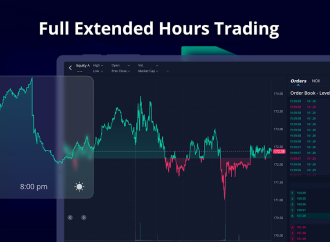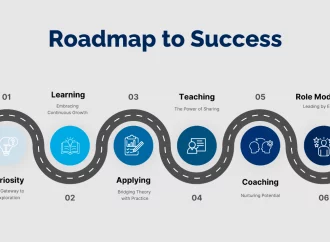Social media has revolutionized the way we communicate and connect with people around the world. With billions of users across different platforms such as Facebook, Twitter, LinkedIn, and Instagram, it’s no surprise that social media has transformed industries from marketing to healthcare. In this blog post, we’ll explore how social media is changing the telecom
Social media has revolutionized the way we communicate and connect with people around the world. With billions of users across different platforms such as Facebook, Twitter, LinkedIn, and Instagram, it’s no surprise that social media has transformed industries from marketing to healthcare. In this blog post, we’ll explore how social media is changing the telecom industry and why businesses need to stay ahead of these changes in order to succeed. From customer service to product development, we’ll examine how telecommunications companies are leveraging social media as a powerful tool for growth and innovation. So buckle up and get ready for an exciting ride into the future of telecom!
What is Social Media?
Social media is a platform for people to share their thoughts, feelings, and experiences with others. It allows users to connect with friends, family, and strangers from all over the world. Social media has become one of the most popular forms of communication, with over 2 billion active users. The telecom industry has been greatly affected by the rise of social media. Social media has created new opportunities for telecom companies to connect with their customers. It has also brought about new challenges, such as how to deal with data usage and privacy concerns.
The Different Types of Social Media
The social media landscape is constantly changing, and new platforms are always emerging. As a result, it can be difficult to keep up with the different types of social media and their respective features. Here is a brief overview of some of the most popular social media platforms:
Facebook: Launched in 2004, Facebook is the largest social networking platform with over 2 billion monthly active users. Facebook allows users to connect with friends and family, share photos and videos, join groups, and much more.
Twitter: Launched in 2006, Twitter is a microblogging platform that allows users to share short messages (called “tweets”) of up to 280 characters. Twitter is also popular for its live-tweeting feature, which allows users to share real-time updates on events as they are happening.
Instagram: Launched in 2010, Instagram is a visual platform that allows users to share photos and videos. Instagram also has several features that make it unique from other social media platforms, such as filters, Stories, and Live Video.
Snapchat: Launched in 2011, Snapchat is a mobile app that allows users to send disappearing photo and video messages (called “snaps”). Snapchat is especially popular among teenagers and young adults.
LinkedIn: Launched in 2003, LinkedIn is a business-oriented social networking platform that allows users to connect with professional contacts and find job opportunities. LinkedIn is also popular for its ability to endorse individuals’ skills and recommend
The History of Social Media
Most people think of social media as a recent phenomena, but it actually has a long and rich history. The term “social media” was first coined in the early 1900s by an author named H.G. Wells. It wasn’t until the 1950s that the term started to be used more regularly, when sociologist Theodore Caplow used it to describe newly emerging patterns of human interaction facilitated by advances in communication technology.
In the late 20th century, social media started to take on its modern form with the advent of computer-mediated communication (CMC). CMC refers to any type of communication that takes place between two or more people through a computer. This includes things like email, instant messaging, chat rooms, and even social networking sites like Facebook and Twitter.
The first real social media site was SixDegrees, which launched in 1997. SixDegrees allowed users to create profiles and add friends, much like modern social networking sites. However, it didn’t take long for other sites to start springing up that offered similar functionality. In 2003, LinkedIn launched as a business-oriented social networking site, followed by MySpace in 2004 and Facebook in 2005. Twitter would come later in 2006.
These days, social media is big business. Facebook alone has over 2 billion active users per month, while Twitter has around 328 million monthly active users. LinkedIn boasts over 106 million monthly active users. And these numbers
How Social Media is Changing the Telecom Industry
The rise of social media has had a profound impact on the telecom industry. In the past, telecom companies have been able to rely on traditional marketing channels to reach their target audiences. However, with the advent of social media, this is no longer the case.
Today, telecom companies must adapt their marketing strategies to account for the growing role that social media plays in the lives of consumers. Social media provides a unique opportunity for telecom companies to connect with their customers on a more personal level. In addition, social media allows telecom companies to gather real-time feedback from customers about their products and services.
As the use of social media continues to grow, it is clear that it will have a significant impact on the way that telecom companies do business. Those who are able to effectively leverage social media will be well-positioned to succeed in the increasingly competitive telecom industry.
The Future of Social Media
In the future, social media will continue to evolve and become more ingrained in our lives. We will see more platforms emerge and existing ones grow and change. Social media will become more interactive and personalised, with augmented reality and virtual reality playing a bigger role. AI and machine learning will be used to create more targeted content and ads, and we will see a rise in social commerce. Privacy concerns will continue to be a big issue, and we will need to find ways to strike a balance between our need for privacy and the benefits of social media.





















Leave a Comment
Your email address will not be published. Required fields are marked with *